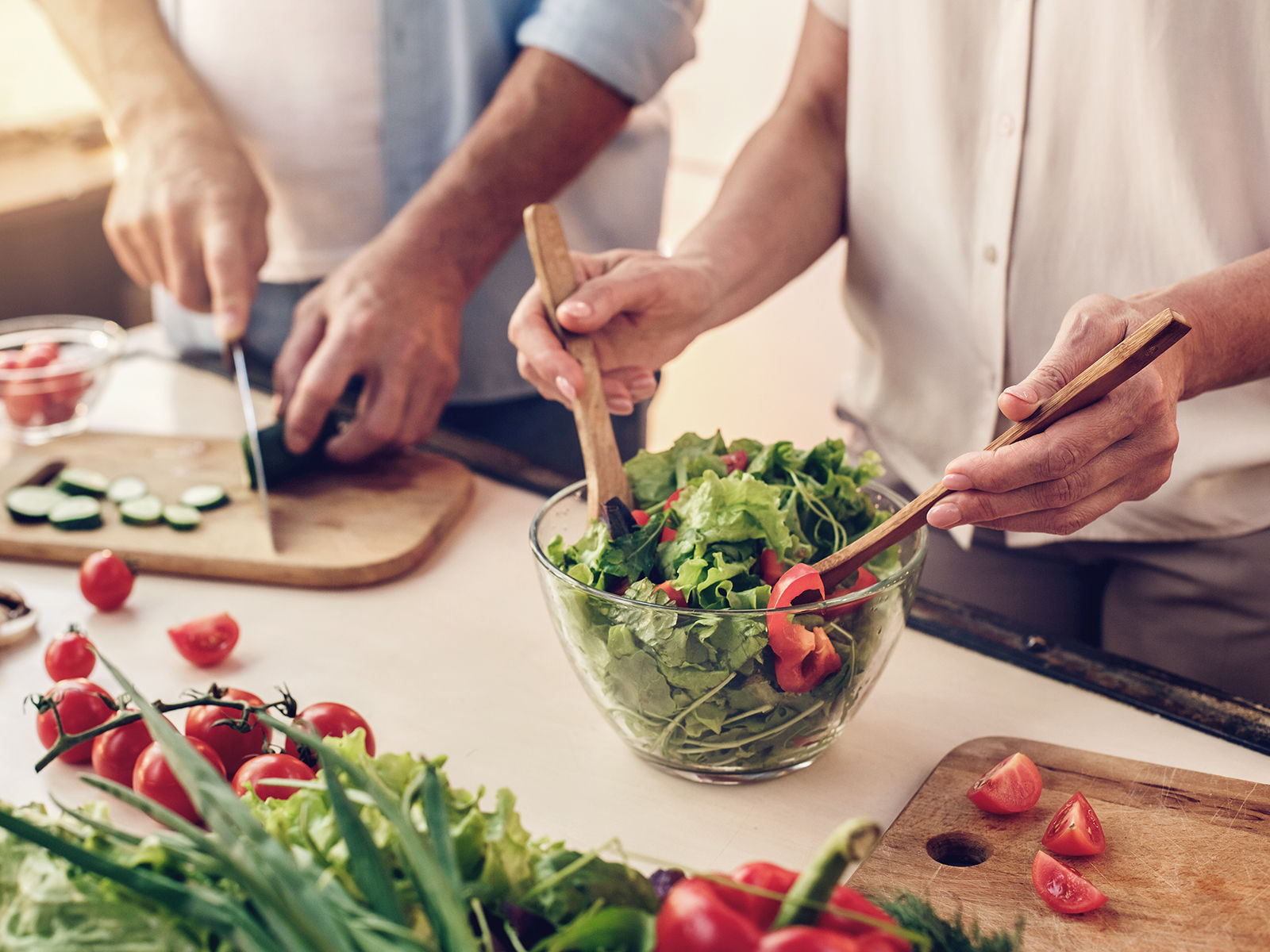As we age, our nutritional needs change. But that doesn’t mean meals have to be bland or boring. Whether you’re cooking for a senior – or for yourself – small changes make a big difference when it comes to health and taste.
1. Choose fresh, whole ingredients
Fresh ingredients are your secret weapon. They pack more flavor than processed foods and offer greater nutrition. When food tastes good, it’s more likely to be eaten – which is especially important for older adults who struggle with reduced appetites.
Use fresh herbs, whole vegetables and flavorful additions like garlic or onions.
2. Low-sodium cooking tricks
Many older adults living with high blood pressure need to watch their sodium intake. Add flavor with these tasty alternatives:
- Citrus juices (like lemon or lime) add brightness to vegetables, fish, salads and even desserts.
- Vinegar and tomatoes provide zingy acidity that makes flavors pop.
- Liquid aminos are a great low-sodium alternative to soy sauce.
- Nutritional yeast is perfect for sprinkling on popcorn or roasted veggies. It’s nutty, cheesy and packed with B vitamins.
- Use spice blends like Italian herbs, curry powder or smoked paprika for depth and warmth.
3. Smart sugar swaps
Older adults lowering their sugar intake can still enjoy sweet treats. Try these diabetic-friendly swaps:
- Replace half the sugar in baking recipes with unsweetened applesauce, mashed bananas or pureed dates.
- Add flavor and trick your taste buds into sensing sweetness with cinnamon, vanilla or nutmeg.
4. Make hydration more appealing
Staying hydrated gets harder as we age, especially if thirst signals fade. Try these fun, flavorful options:
- Add sliced fruit like lemon, cucumber, berries or orange to water.
- Enjoy herbal teas served hot or iced. Be mindful of caffeine and sweeteners.
- Choose water-rich foods like watermelon, cucumbers, celery and oranges.
- Try low-sugar treats like fruit-based popsicles, sorbets and Jell-O for a hydration boost.
5. Stimulate the senses to spark appetite
Appetite often declines with age. Try these ideas to reignite an interest in food:
- Sauté onions, garlic or a little bacon. The scent alone can make you hungry.
- Serve food warm to enhance aroma and flavor.
- Add colorful veggies to your plate for visual appeal.
- Garnish with fresh herbs like rosemary or basil for a fragrant finishing touch.
- Whenever possible, make meals social. Eating with others often makes food more enjoyable.
6. Incorporate heart-healthy superfoods
Superfoods are nutrient-dense powerhouses that help support good health. Here are some examples and simple ways to add superfoods to your diet:
- Use berries in yogurt parfaits or smoothies.
- Mix quinoa into salads.
- Toss spinach or kale into scrambled eggs or soups.
- Roast sweet potatoes or Brussels sprouts for a crispy, satisfying side.
- Varying your cooking method. Pureeing, sautéing, juicing or roasting can keep meals interesting.
7. Boost protein for power
Older adults need increased protein to maintain muscle mass and strength. Here are easy ways to include protein:
- Center meals around lean meats and fish.
- Add beans, lentils or chickpeas to salads and soups.
- Keep hard-boiled eggs in the fridge for a ready-to-go snack.
- Use Greek yogurt in smoothies, dips or breakfast bowls.
- Try a creamy tofu and avocado vinaigrette for salads, rich in protein and good fats.
- Beans and rice together form a complete protein.
8. Healthy snacking: Prep makes perfect
Convenience foods are easy, but not the healthiest. Have wholesome, ready-to-eat options on hand, such as:
- Broccoli with soy ginger dressing
- Cut veggies with hummus
- Greek yogurt cups topped with fresh berries
- Apple slices with almond butter
- Deviled eggs with “everything bagel” seasoning
9. Focus on fiber
Digestive health depends on a high-fiber diet. Here’s how to sneak more in:
- Start the day with overnight oats topped with fruit or whole-grain toast with avocado.
- Swap white rice or potatoes for brown rice, quinoa or lentils.
- Add beans to soups and stews.
- Mix wheat bran into meatloaf or sauces.
- Puree cooked veggies and blend them into pasta sauce or casseroles.
Important: Increase fiber slowly to avoid bloating or discomfort.
Get a taste of Holiday
At Holiday, our residents enjoy three wholesome and delicious meals a day, in the company of good neighbors.
Come for lunch – on us – and get a taste of everything we offer. Find a community near you and schedule a visit today.
Bon appétit!
You might also like
Want to learn more about life at Holiday?
